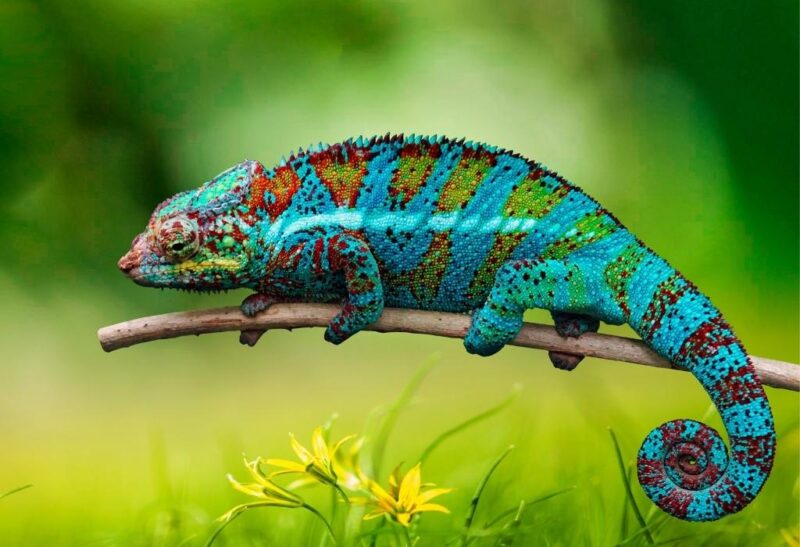Every living organism is impacted by and has an impact to the ecosystem. To be able to survive and thrive, they have to be well-adapted to their environments and habitats. Several animals had to go through significant changes to achieve so.
Animals that adapted to their environments are the beavers, camels, octopus, polar bears, tigers, penguins, sloths, raccoons, elephants, wolves, chameleons, giraffes, crocodiles, armadillos, hummingbirds, rattlesnakes, skunks, cheetahs, owls, woodpeckers, leopard geckos, and eagles.
This article will provide you with everything you need to know about how these animals adapted to their environments, their physical attributes, food preferences, defining characteristics, habitats, and more!
Table of Contents
What Is an Adaptation and Why Are Adaptations Important for Animals?
Adaptations refer to any physical or behavioral traits that help animals or plants survive, thrive, and become more well-suited in their habitats or environments.
Physical or structural adaptations can be a development or modification of a certain body part, covering, feature, or region, while behavioral adaptations refer to an animal’s action, usually based on the response they have against external stimulus (e.g. defensive mechanisms).
Adaptations are important because it allows any living organism to protect itself against the dangers present in its natural habitats and increase its chances of survival.
22 Animals That Adapted to Their Environments
Beavers
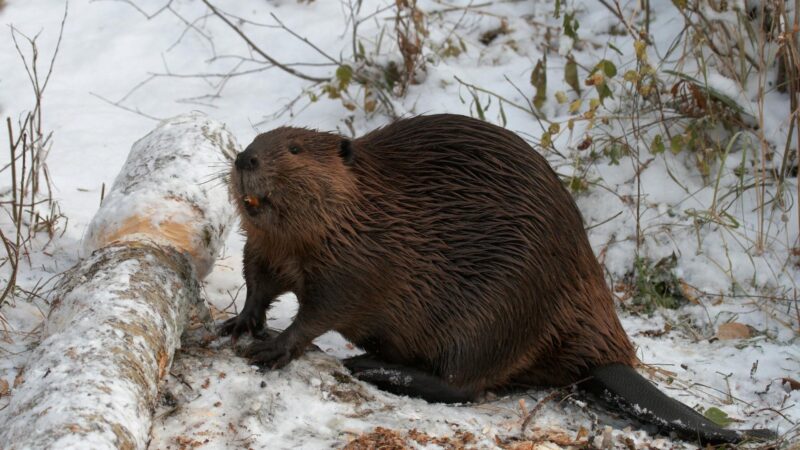
Beavers can stay underwater for up to 5 minutes due to their huge lungs made for slow circulation, underwater vision, and special valves in the ears and nose. They also have dense, waterproof coats that they constantly groom with castor oil to keep dry and warm under cold temperatures, as well as large, continuously-growing teeth that can cut down trees and tails that can be used for communication with other beavers.
- Scientific Name: Castor
- Appearance: Large-sized rodents with stocky bodies, sleek coats, webbed feet, long incisors, and broad, flat, and scaly tails.
- Color: Yellowish brown or reddish brown to nearly black-colored coats and dark orange incisors
- Lifespan: 10 to 20 years (wild), Up to 30 years (captivity)
- Habitat: Lodges found in or around freshwater systems, such as rivers, lakes, ponds, streams, swamps, and marshes, that are usually forested.
- Height: 73 to 135 centimeters
- Weight: 13 to 35 kilograms
- Diet: Primarily trees, such as birch, maple, willow, alder, poplar, and other woody vegetation. They also feed on water vegetation and prefer herbaceous plant material when it is available.
- Place Of Origin: North America and Eurasia
- Characteristics: Semi-aquatic mammals that are mainly nocturnal but can also be active during the day. They live in colonies of up to 8 related individuals and are territorial. They’re non-migratory, but they travel distances away from their homes to forage for food.
Camels
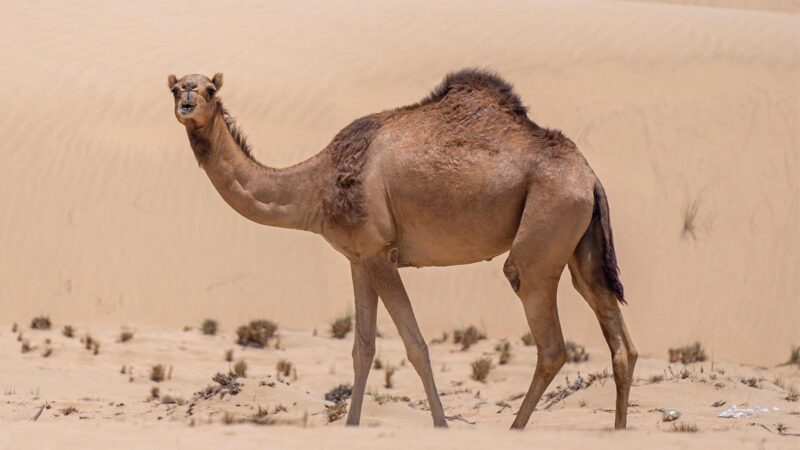
Contrary to popular belief, camels store energy, not water, in the form of fat in their hump(s), which enables them to travel long distances and survive food scarcity. Their long nostrils and eyelashes serve as protection against dust and sand. They can also survive without water for up to two weeks as they conserve it in their bodies by regulating their body temperatures and not sweating. It also helps that they drink about 32 gallons of water in just one drinking session.
- Scientific Name: Camelus
- Appearance: Large, humped mammals with thick coats, long and curved necks, and deep but narrow chests. Dromedary camels have only one hump, while Bactrian camels have two humps.
- Color: Shades of brown (dark, sandy, or caramel) or dirty gray, but can also range from black to white.
- Lifespan: Up to 50 years (both in the wild and in captivity)
- Habitat: Deserts, dunes, and plains
- Height: 1.6 to 2 meters (at the shoulder)
- Weight: 300 to 690 kilograms
- Diet: Dromedaries are herbivorous, while Bactrian camels are omnivorous. Both primarily eat grass and other desert vegetation, such as thorny plants and saltbushes. Halophytic plants are also necessary for their diets.
- Place Of Origin: Central and East Asia (Bactrian), Arabia or Somalia (Dromedary)
- Characteristics: Non-territorial, migratory, and social animals that live in herds made up of up to 20 members. They’re generally docile but can kick or bite when irritated and spit when excited.
Octopus
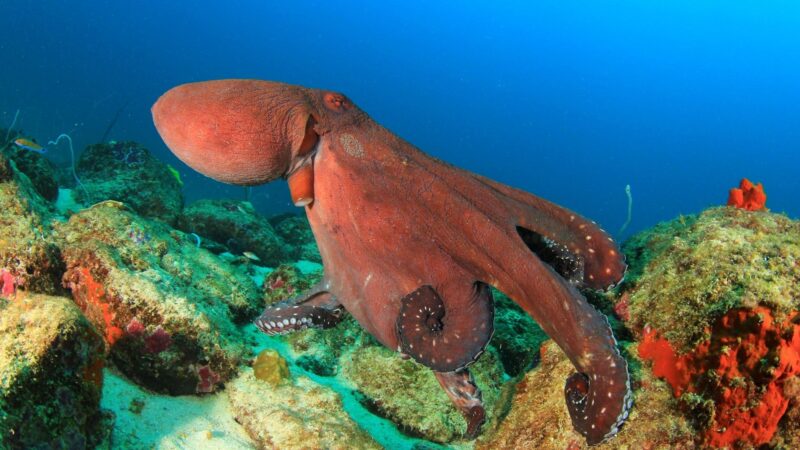
One of the greatest adaptations that octopuses developed is their heightened intelligence, as they’re able to solve puzzles and navigate through mazes. They can hide or flee from predators by camouflaging themselves using pigment sacks in their organs, called chromatophores, as well as cutting off a limb to free themselves or to temporarily confuse their pursuers.
- Scientific Name: Octopoda
- Appearance: Soft-bodied creatures with round, bulbous heads, eight arms, large eyes, distinct rectangular-shaped pupils, and a parrot-like beak.
- Color: Vary in color per species. Their pigments can be a combination of red, orange, yellow, black, or brown. They can also camouflage and match the color and texture of their hiding spots to disguise themselves from predators.
- Lifespan: 1 to 5 years (both in the wild and in captivity)
- Habitat: Depending on the species, they can live in temperate, tropical, subtropical, and coastal waters.
- Height: 25 to 60 centimeters (mantle height)
- Weight: 3 to 10 kilograms
- Diet: Small fishes, clams, crabs, snails, and other octopuses.
- Place Of Origin: Depends on the species, but they live in every ocean.
- Characteristics: Nocturnal and generally non-migratory, but some species leave coastal waters during the autumn or early summer season while others, like the Octopus vulgaris, perform seasonal migrations. They’re territorial and solitary except during mating and spawning season.
Related: Do Octopus Have Beaks? | Information and Facts
Polar Bears

Polar bears have white coats that are primarily made for body temperature regulation—they use them in conjunction with their insulating blubber to keep warm during the winter, then shed their winter coats in a molting process to keep them cool during the summer. Aside from this, they use their coats to camouflage during hunting and to repel water.
- Scientific Name: Ursus maritimus
- Appearance: Large-sized mammals with stocky bodies, small oblong-shaped heads that are small compared to their bodies, long necks, short rounded ears, broad noses, and short tails.
- Color: They have clear fur since it lacks pigment. This means that their white appearance is due to the refraction of light. Their pelage can also be yellowish due to oxidation as well as gray or brown, depending on light conditions and the season.
- Lifespan: 25 to 30 years (wild), Up to 43.8 years (captivity)
- Habitat: They prefer living on the pack ice found in the Arctic Ocean. When ice melts, or during the summer season, they will inhabit coastlines or islands with ice.
- Height: 1.8 to 3 meters (standing height)
- Weight: 150 to 800 kilograms
- Diet: Mainly eats seals, preferring ringed seals, but they also eat harp seals, bearded seals, hooded seals, walruses, fish, sea birds and their eggs, and carrion.
- Place Of Origin: The Arctic
- Characteristics: Solitary except during mating season and when mother bears take care of their cubs. They’re competing against each other when it comes to food but are mostly inactive as they spend most of their time lying, sleeping, or still-hunting. They’re migratory when ice in their area starts to melt or when they’re looking for potential mates or food.
Tigers
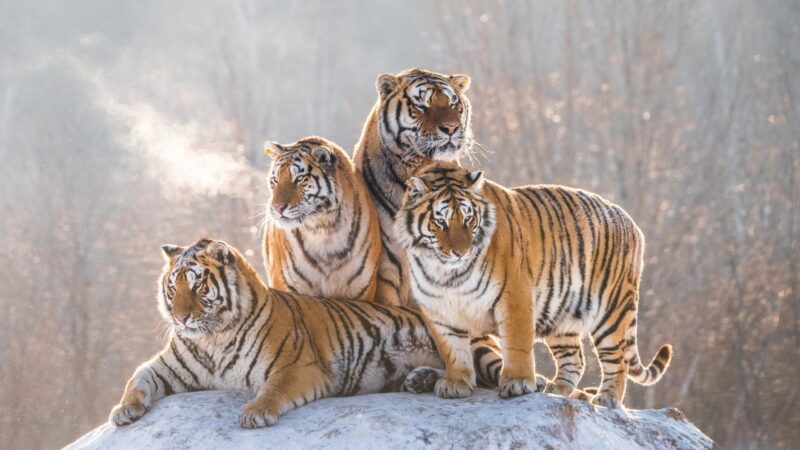
Thanks to their retractable webbed paws, and muscular bodies, tigers are both excellent swimmers and climbers. Their characteristic stripes allow them to camouflage surrounding vegetation during hunting for prey as well as for fending off potential predators. They also have “false eyes,” which are just white spots behind their ears also used to ward off predators.
- Scientific Name: Panthera tigris
- Appearance: Large cats that have short but thick necks, enormous limbs, broad shoulders, thick necks, broad forepaws, and long, retractable claws.
- Color: Generally red-orange or yellow-orange coats that have black stripes running across their shoulders and flanks vertically. They also have white bellies and spots on their ears. Some subspecies, like the White tiger, have white fur and stripes that are dark brown to sepia in color.
- Lifespan: 8 to 10 years (wild), Up to 26 years (captivity)
- Habitat: Depending on the subspecies and populations they belong to. They can live in forests, tall grass jungles, woodlands, and grove swamps and can thrive in a variety of climates ranging from warm and moist to areas that have temperatures as low as -40°C.
- Height: 1.98 to 3.7 meters
- Weight: 91 to 423 kilograms
- Diet: Primarily wild ungulate species such as chitals, elks, deers, sambars, black bucks, water buffalos, and wild pigs, but they also feed on domestic ungulates such as horses, goats, and cattle. Occasionally, they eat large birds, fish, leopards, crocodiles, turtles, and frogs.
- Place Of Origin: Asia
- Characteristics: Silent, nocturnal hunters that are solitary, territorial, and migratory in some populations.
Penguins
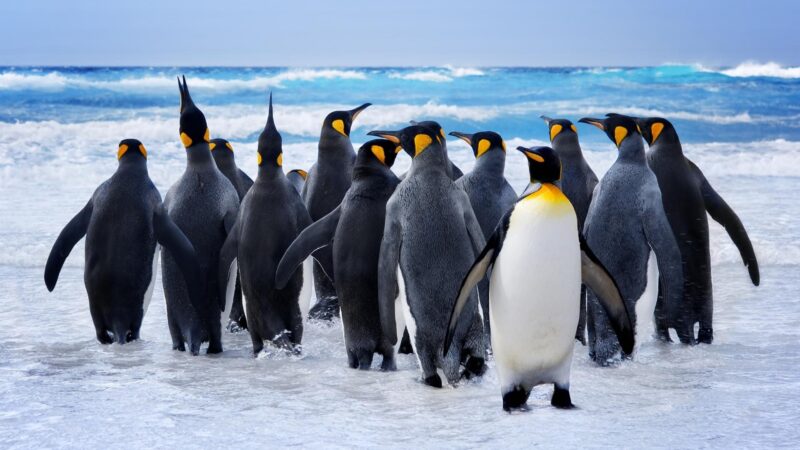
Penguins have downy feathers and an insulating layer of blubber, which allows them to survive and stay warm even during the harshest winters. During warmer temperatures, they can expel heat through the patches around their eyes as well as their feet. Their streamlined bodies are made for swimming and deep diving, while their coloration, which has countershading or contrasting dorsal areas and lights ventral areas, allows them to camouflage against predators.
- Scientific Name: Spheniscidae
- Appearance: Spindle-shaped and elongated bodies with large heads, short necks, short and wedge-shaped tails, flipper-link wings, short legs, and webbed feet.
- Color: Depends on the species, but they generally have black heads and backs as well as white undersides and throats. Some species have yellow plumage, such as the Rockhopper penguins, which have yellow brows, and orange plumage, such as the Emperor penguins, which have orange patches found on their ears to shoulders region.
- Lifespan: Up to 20 years (wild), up to 38 years (captivity)
- Habitat: Near nutrient-rich, cold seas and oceans found on continental regions as well as temperate and sub-Antarctic islands that are remote and free of potential terrestrial predators. Depending on the species, they can live in climates ranging from tropical to icy.
- Height: 25 centimeters to 1.3 meters
- Weight: 1.1 to 40 kg
- Diet: Strictly seafood such as krill, fish, squid, octopus, mollusks, and crustaceans.
- Place Of Origin: Southern Hemisphere
- Characteristics: Highly social birds as they thrive in large colonies, referred to as rookeries, that can consist of up to a million nesting pairs. They’re quite vocal, relying on varying frequencies for communication with other birds. Moreover, they’re also migratory, diurnal, and territorial.
Sloths

Both two-toed and three-toed sloths are adapted to an arboreal lifestyle due to their long, curved claws that allow them to latch onto trees and even hang upside down. Both sloths developed a symbiotic relationship with algae, which is present in their fur, subsequently giving them a greenish appearance. This helps them camouflage among trees and protect against predators.
- Scientific Name: Folivora
- Appearance: There are 2 known genera of sloths: two-toed sloths and three-toed sloths. Two-toed sloths have larger body sizes, bigger eyes, relatively proportionate limbs, and tails that are small or simply absent. Three-toed sloths are smaller, with smaller eyes, forelimbs that are much longer than their hindlimbs, and stubby but visible tails. Both sloths have rounded heads, downcast eyes, long limbs, and tiny ears.
- Color: Two-toed sloths are gray-brown in color with its face surrounded by white fur while three-toed sloths are red-brown in overall color with a white face, brown snout, and a black mask around the eyes. Both have a greenish hue on their fur due to the growth of algae.
- Lifespan: 12-20 years (wild), up to 49 years (captivity)
- Habitat: They’re generally found in areas that have continuous canopies, such as high-altitude rainforests and lowland rainforests.
- Height: 48.5 to 76 centimeters
- Weight: 2.5 to 8 kilograms
- Diet: Mostly leaves, fresh green shoots, buds, and fruit. They occasionally feed on insect larvae or other food packed with protein, such as bird eggs and small invertebrates.
- Place Of Origin: Central and South America
- Characteristics: Usually solitary except during mating or when taking care of offspring. They’re nocturnal, extremely sedentary, and relatively territorial.
Raccoons
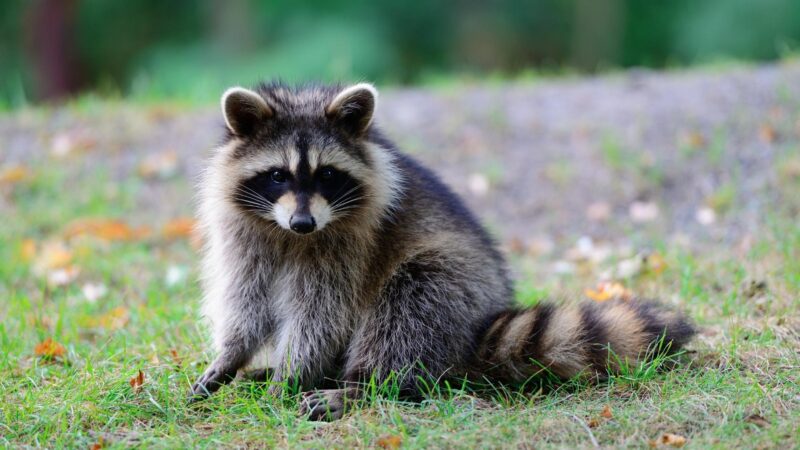
Due to habitat destruction, raccoons have become examples of behavioral adaptation as they have learned to live and thrive in urban and suburban areas, particularly in basements, attics, storage sheds, and garages. They’re generalists and are not picky eaters, so they have also learned to forage for food in garbage cans with their paws that have a highly developed sense of touch.
- Scientific Name: Procyon
- Appearance: Stocky-built bodies with broad heads, pointed muzzle, slightly pointed and erect ears, slender forepaws, long and bushy tails, and thick fur around the eyes.
- Color: Can be varying shades of brown, gray, yellow, and black, but black, rufous, and albino colorations are also possible but rare. They have distinctive black masks across their eyes and tails that have about 4 to 10 black rings.
- Lifespan: Up to 20 years (wild), up to 21 years (captivity)
- Habitat: Commonly found in forested areas, near water, or both. However, they’re extremely adaptable and can be found in a variety of habitats, including suburban and urban areas as well as agricultural lands.
- Height: 20 to 40 centimeters (standing height)
- Weight: 1.8 to 10.4 kilograms
- Diet: Fruits, nuts, corn, fungi, crayfish, frogs, fish, insects, rodents, bird eggs, and carrion. Urban and suburban raccoons also eat garbage.
- Place Of Origin: Central and South America
- Characteristics: Nocturnal animals, solitary, non-territorial, and non-migratory, but they may travel to forage for food or swim long distances. They’re also relatively docile and can live well with humans.
Related: What Are the Different Types of Raccoons? | Information and Facts
Elephants
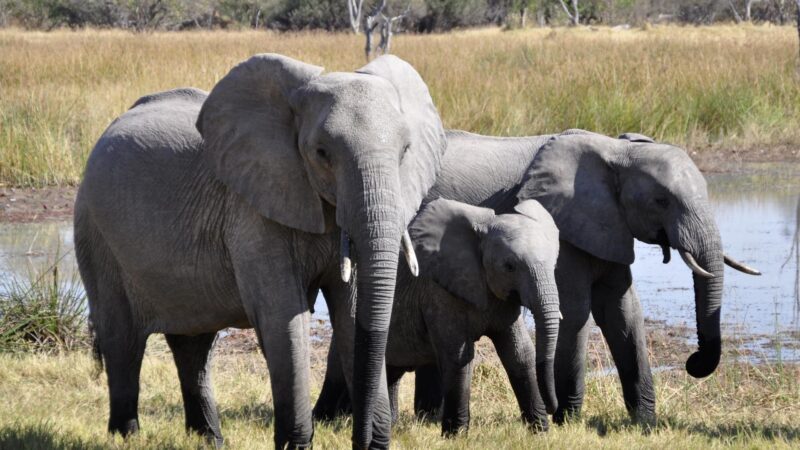
Elephants flap their ears to fan themselves during intense heat, as well as roll in mud and spray water on themselves using their trunks since they have no sweat glands. Aside from this, their trunks are multipurpose as they function for smelling, picking up and transferring food, and touching. They also developed the tendency to walk on tiptoes to help them equally distribute their weight and minimize their body pressure.
- Scientific Name: Elephantidae
- Appearance: Large mammals with long muscular trunks and sparse hair all over their bodies. African elephants have low-domed heads, long upward-curving tusks, saddle-shaped backs, and large ears, while Asian elephants have double-domed heads, short upward-curving tusks, curved backs that resemble a humped back, and small, flattened ears.
- Color: Gray skin that’s creased and bumpy with hair that varies in thickness, length, and color along their bodies.
- Lifespan: Up to 70 years (wild), up to 80 years (captivity)
- Habitat: They occupy a variety of habitats such as rainforests, savannas, swamps, grasslands, and even occasionally deserts and beaches.
- Height: 2.4 to 4 meters
- Weight: 2,000 to 6,100 kilograms
- Diet: Plant material such as grasses, legumes, palms, sedges, buckthorns, spurges, basswoods, fruits, flowers, grains, seeds, tree parts (barks, twigs, roots), and herbs.
- Place Of Origin: Africa and Asia
- Characteristics: Diurnal but can be nocturnal depending on the amount of time they spend eating and searching for food. They’re nomadic and often develop small groups, consisting of 5 to 20 individuals, depending on the species.
Wolves
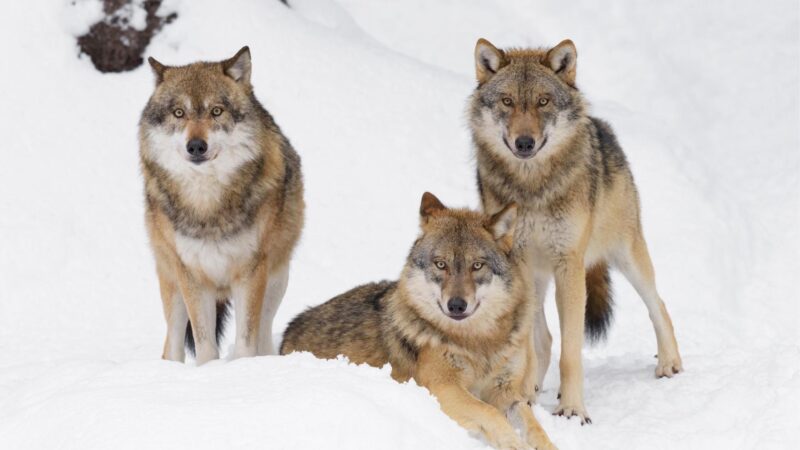
Like raccoons, wolves also have developed a capacity for occupying human-dominated and altered landscapes, as well as becoming habituated to habitat disturbance. They have wooly fur coats that provide insulation, guard hairs that repel moisture, paws with pads and claws that allow traction and support when walking on snow, reflective retinas that boost night vision, and excellent stamina to help in traveling and hunting.
- Scientific Name: Canis lupus
- Appearance: Large dog-like bodies with pronounced claws, narrow but deep chests, broad heads and muzzles, relatively long tails and legs, and generally pointy and upright ears
- Color: Fur varies in color depending on geographical location and subspecies ranging from cinnamon, brown, black, gray, and white. They have dark shoulder mantles and backs, while their underparts are usually pale in comparison to their overall coats.
- Lifespan: 5 to 14 years (wild), up to 16 years (captivity)
- Habitat: They live in a variety of habitats, preferring areas with minimal human disturbance and sufficient food, such as forests, arctic tundra, arid landscapes, and prairies.
- Height: 71 to 85 centimeters (at the shoulder)
- Weight: 23 to 80 kilograms
- Diet: Large animals such as elks, moose, reindeer, bison, and musk oxen, as well as smaller prey such as rabbits and beavers. They occasionally feed on livestock and garbage.
- Place Of Origin: North America and Eurasia
- Characteristics: Diurnal, highly territorial, and social as they live and thrive in packs that have a strong, established dominance hierarchy. They’re sedentary during spring and summer, then nomadic during fall and winter.
Chameleons
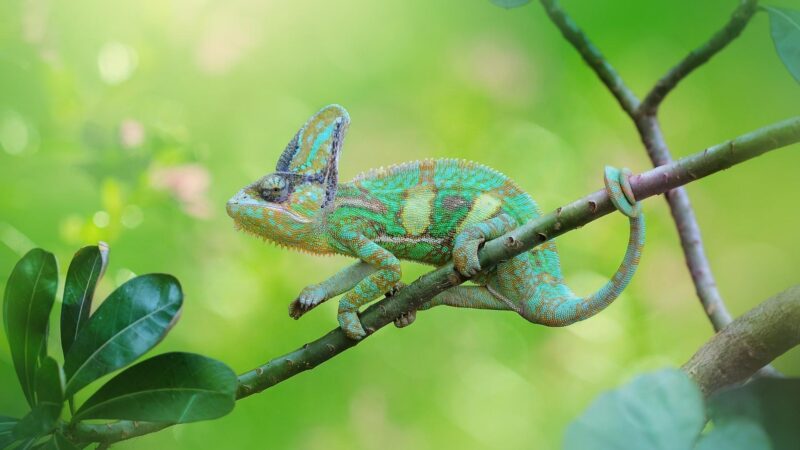
Chameleons have the most colorful adaptations, as seen by their ability to change their skin colors and patterns for protection against predators, body temperature regulation, communication, and even mood indicators. They also have eyes that can individually move in any direction, prehensile tails that help them wrap around tree branches, and long, elastic tails that come with an accelerator muscle, helping them catch prey fast.
- Scientific Name: Chamaeleonidae
- Appearance: Laterally compressed bodies with bulging eyes, long and slim legs, extensive tongues, zygodactyl feet (toes are formed in pairs, arranged to oppose each other, and fused on the feet), and tails that are seldom curled
- Color: Comes in a variety of colors, such as red, orange, yellow, blue, pink, and turquoise.
- Lifespan: 3 to 10 years (captivity), up to 25 years (wild)
- Habitat: Mostly in rainforests, deserts, semi-deserts, savannas, and even in mountains. They’re also found in trees, small bushes, grass, dry branches, or fallen leaves.
- Height: 17 to 25 centimeters (body length)
- Weight: 85 to 170 grams
- Diet: Insects such as grasshoppers, crickets, locusts, stick insects, and mantids. Larger-sized chameleons can eat other lizards and small birds. They occasionally feed on plant material.
- Place Of Origin: Africa
- Characteristics: Diurnal, solitary, and highly territorial. Some species, like the veiled chameleon, are aggressive towards each other but are generally shy towards other animals and humans.
Giraffes
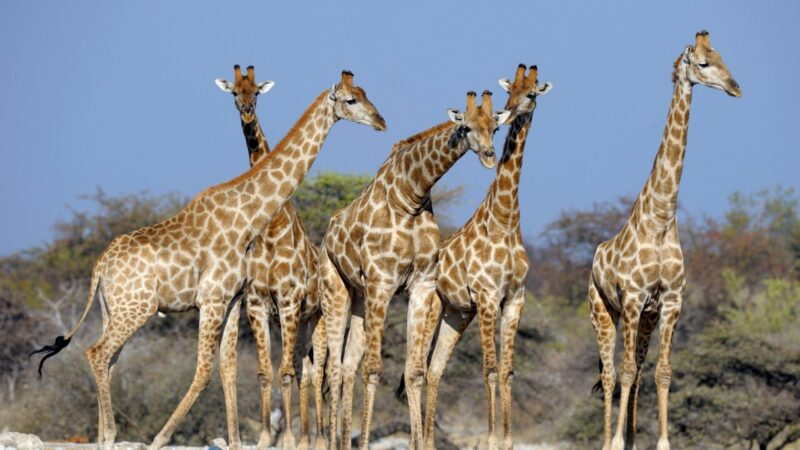
Although no scientific consensus has been reached on the reason why giraffes have long necks, one theory explains that it gives them the ability to reach for leaves and other vegetative materials usually found in tall trees. They also use their elongated necks to look for predators even at great distances, then subsequently rely on their spots as camouflage.
- Scientific Name: Giraffa
- Appearance: Extremely tall mammals with long necks, fuzzy-edged or sharp-edged coats, long and sturdy legs, steep sloping back, thin and long tails that have black tufts at the end, horns that are covered with skin and fur, and large eyes
- Color: Their fur coats are varying shades of brown to nearly black with spots that vary in pattern, size, and color, although they’re usually shades of brown to black. Their spots are covered in hair that is either cream or color in color.
- Lifespan: 10 to 15 years (wild), 20 to 27 years (captivity)
- Habitat: Land that is arid and dry, preferably areas that are abundant in Acacia trees, such as in grasslands, savannas, and open woodlands
- Height: 3 to 18 meters
- Weight: 1,180 to 1,930 kilograms
- Diet: Primarily leaves from Acacia trees, but they also feed on flowers, leaves from other tree species, fruits, seed pods, and soil when it’s mineral-rich or salty enough for them to eat.
- Place Of Origin: Eurasia
- Characteristics: Social animals that thrive in herds are made up of up to 20 or more individuals. They’re non-territorial, silent, and generally diurnal but can also feed and drink water at night and migrate during rainy seasons.
Crocodiles

Crocodiles have eyes (which have transparent eyelids), ears, and nostrils located on top of their heads, which allows them to submerge in water completely but still be capable of seeing, breathing, and hearing only by exposing the upper portion of their heads. They can also use their mouths to regulate their body temperature in a process called “gaping” as well as to decrease the risk of fungal infections.
- Scientific Name: Crocodylidae
- Appearance: Large and broad bodies with large heads, leather-textured skins, bony scales that are shaped like plates, short legs, narrow and tapered snouts, powerful jaws, pointy teeth, and long and muscular tails
- Color: Their skins can be varying shades of brown or green.
- Lifespan: Up to 70 years (wild), up to 100 years (captivity)
- Habitat: Depends on the species, but they generally inhabit brackish, coastal, and salt-water habitats such as rivers, coasts, swamps, creeks, and tropical and subtropical lakes.
- Height: 6 to 20 feet (body length)
- Weight: 76 to 520 kilograms
- Diet: Fish, insects, crustaceans, small mammals, frogs, and lizards. They also feed on sharks and birds.
- Place Of Origin: Australasia
- Characteristics: Mostly nocturnal and non-territorial except for the saltwater crocodile which is known for being not only highly territorial but aggressive as well. They’re solitary and are generally sedentary but can also migrate.
Armadillos
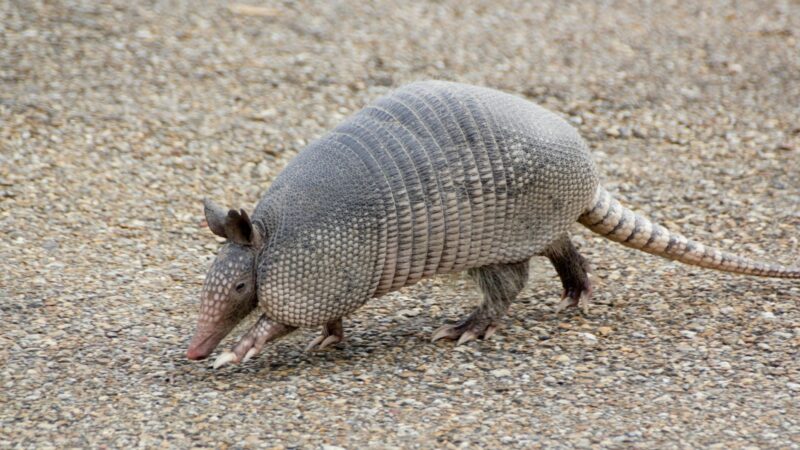
Armadillos are known to be highly fossorial or adapted to burrowing underground where they sleep and nest due to their extremely strong legs that can dig through soil. Their sticky tongues and digging skills allow them to forage insects and swallow them whole. They also use their armor for protection against predators, biting insects, and abrasive soil.
- Scientific Name: Dasypodidae
- Appearance: Bodies are protected by a leathery keratinous armor shell that covers their sides, tail, back, and the top of their head. They have soft, unprotected bellies, small limbs that have irregular coverings, long and pointy snouts, small eyes, and long rat-like tails with bony rings. Some species, like the Six-banded armadillo, have hair on soft areas or bands of their skin.
- Color: This varies depending on the species, but they can be shades of red, black, gray, or yellow.
- Lifespan: Up to 18 years (captivity), up to 23 years (wild)
- Habitat: Wetlands, deserts, sandy coastal regions, and mountains
- Height: 11.4 to 150 centimeters (body length)
- Weight: 90 grams to 50 kilograms
- Diet: Primarily insects, such as ants, leeches, millipedes, and snails, but they also feed on plant material, small animals, and arachnids.
- Place Of Origin: South America
- Characteristics: Mostly solitary but can form pairs or small groups and are either nocturnal or crepuscular (active at twilight), although some species, like the Pichi armadillos, forage during the day. They’re non-territorial and migratory, particularly towards North America, but at a slow but sure pace.
Hummingbirds

Aside from their distinctive long, needle-like beaks that have specialized tongues that help them reach into the nectar of flowers, hummingbirds have excellent maneuverability and are known to be the only vertebrates that can perform sustained hovering as well as flying upside-down and backward.
- Scientific Name: Trochilidae
- Appearance: Small birds with long and narrow bills, small feet and wings that are shaped like sabers, and a gorget (usually found in males but females can have it too), which is referred to small and stiff feathers found on the upper chest area and throat. Males can also have crests and longer tail feathers.
- Color: Hummingbirds from the Phaethornithinae family generally have gray, brown, and red plumages with no iridescence, while those from the Trochilinae family have iridescent feathers that are orange, blue, green, and metallic red in color.
- Lifespan: 5 to 12 years (wild), up to 17 years (captivity)
- Habitat: A variety of terrestrial habitats, preferably near abundant sources of nectar-producing flowers such as desert oasis, tropical rainforests, arid scrubs, alpine tundras, and coastal lowlands. They can also be found in urban and suburban areas, particularly in cultivated gardens and hummingbird feeders.
- Height: 6 to 12 centimeters
- Weight: 2 to 21 grams
- Diet: Primarily nectar, but they also feed on arthropods such as spiders, flies, wasps, ants, and beetles.
- Place Of Origin: South America
- Characteristics: Solitary, mostly territorial, and aggressive towards both predators and other hummingbirds. North American hummingbirds are migratory, while tropical hummingbirds will only travel to new elevations within their geographic range.
Rattlesnakes
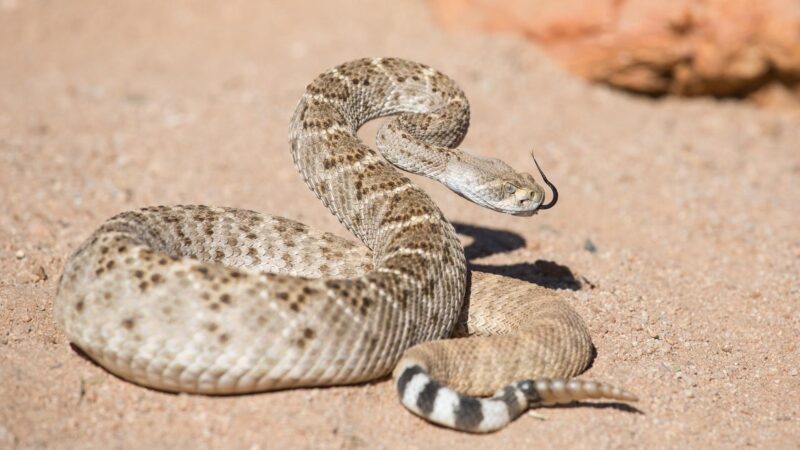
Other than their venomous, retractable fangs used to paralyze prey, rattlesnakes also use their rattles and the ability to camouflage using their skin colors as a mechanism for both protection against predators and subduing prey.
Their smooth and shiny scales are made up of keratin which retains water important for the snakes’ hydration and motility. Additionally, they also have pits on the sides of their head that can detect temperature, which helps them avoid areas that are too hot or too cold for them.
- Scientific Name: Crotalus & Sistrurus
- Appearance: Long and large vipers with a distinctive head that’s shaped like a triangle and a rattle on the end of their tail made of loose sections of keratin and shed skin.
- Color: Colorations vary from shades of black, brown, gray, yellow, red, pink, and green blotched with patterns of diamonds, bands, hexagons, or no pattern at all.
- Lifespan: 10 to 25 years
- Habitat: They live in a variety of habitats, including forests, agricultural fields, swamps, river floodplains, lowland cane thickets, grasslands, and rocky flats.
- Height: 0.5 to 2.5 meters (body length)
- Weight: 150 grams to 15.4 kilograms
- Diet: Small to medium-sized rodents, including squirrels, mice, chipmunks, and shrews, but they also feed on amphibians, lizards, and birds. Some species, like the Banded rock rattlesnakes, prey on other snakes.
- Place Of Origin: America
- Characteristics: Diurnal, migratory, and non-territorial. They’re generally not aggressive unless threatened or handled wrongly.
Skunks
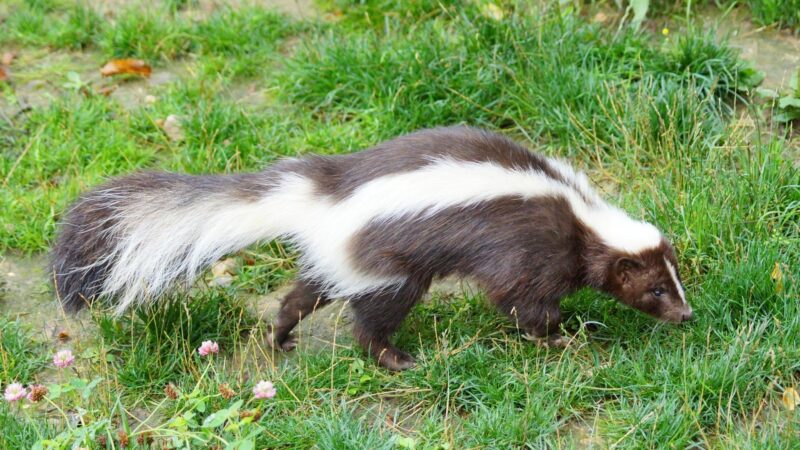
The infamous skunk spray, which includes sulfur chemicals, is a prime example of a physical adaptation to deter predators as large as bears with its foul smell. Their conspicuous striped or spotted coloration functions as a defensive mechanism, as it becomes a warning toward potential predators.
- Scientific Name: Mephitidae
- Appearance: Generally broad and squat bodies with a usually thickly-furred tail, strong claws, and short limbs. Hog-nosed skunks have a more elongated snout, while stink badgers, who are now considered part of the skunk family, have short pointed tails.
- Color: Striped skunks have a black coat and two distinctive white stripes along their head, body, and tail. Hooded skunks look similar to Striped skunks, but they may have only 1 stripe from their forehead to their tail tips. Spotted skunks have a black coat and are accompanied by a combination of white spots and stripes with tails that are also black but can be white-tipped.
- Lifespan: 2 to 7 years (wild), up to 15 years (captivity)
- Habitat: Can thrive in a variety of habitats such as agricultural lands, open prairies, deserts, plains, wooded areas, woodlands, and even urban and suburban communities.
- Height: 20 to 48 centimeters (body length)
- Weight: 198 grams to 6.4 kilograms
- Diet: Primarily invertebrates such as insects and worms but they also feed on small vertebrates such as birds, eggs, rodents, snakes, and lizards.
- Place Of Origin: North America, Southern Canada, Indonesia, and the Philippines
- Characteristics: Nocturnal, non-territorial, non-migratory, and solitary, unless mating or raising offspring.
Cheetahs
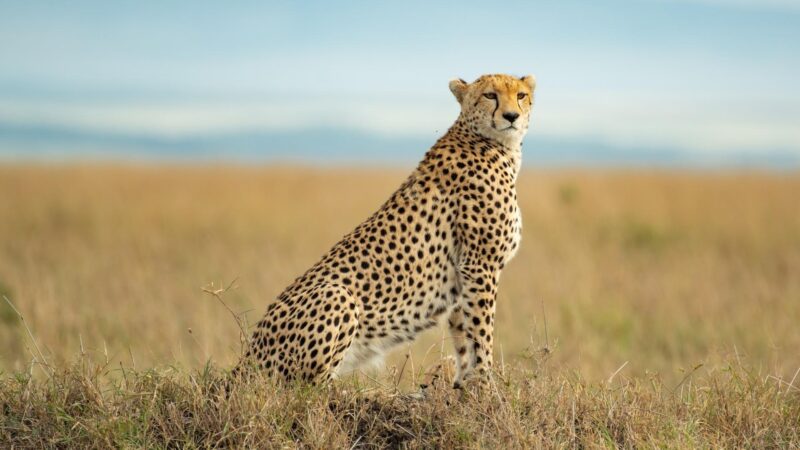
Cheetahs, being the fastest animal on land, have bodies that are designed for speed: blunt and semi-retractable claws for additional traction, lean bodies with light bones, flexible spinal columns, long legs, and a sliding shoulder joint. They also have spotted coats that help camouflage them against potential prey.
- Scientific Name: Acinonyx jubatus
- Appearance: Large cat with a slim body, small rounded heads, long legs relative to their body size, eyes that are small and rounded narrow paws that are slightly blunted and curved, and short ears.
- Color: Gray, pale yellow, or fawn pelages that are speckled with small, rounded spots throughout their bodies (including their tails). Their underparts are paler and are usually a light tan or white color. They have a distinct black stripe on their faces.
- Lifespan: 6 to 10 years (wild), up to 15 years (captivity)
- Habitat: Deserts, savannahs, grasslands, mountainous terrains, and areas with dense vegetation, but they can also be found on commercial farms
- Height: 67 to 77 centimeters (at the shoulder)
- Weight: 21 to 72 kilograms
- Diet: Primarily gazelles, but they also feed on other small antelope such as steenboks, springboks, and duikers. They also feed on birds, hares, and rabbits.
- Place Of Origin: Africa and Central Iran
- Characteristics: Diurnal, can be territorial and non-territorial, and non-migratory.
Owls
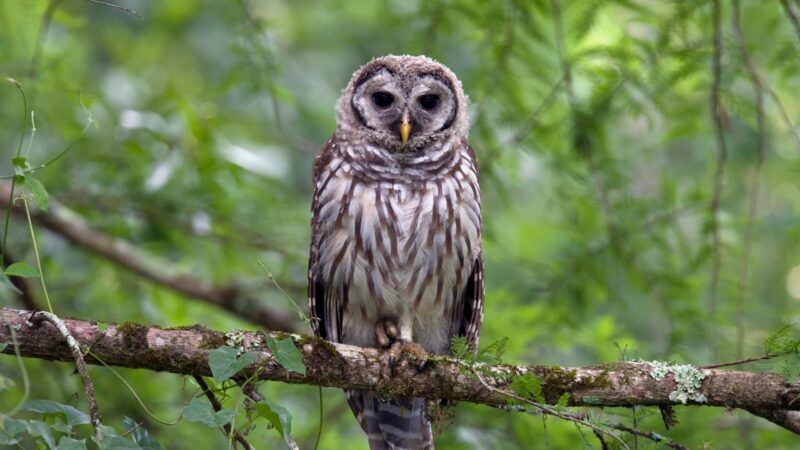
Owls have physical adaptations made for hunting, such as their large eyes facing forward on their heads that allow greater depth perception of their surroundings, necks that can turn up to 270 degrees, and sharp and well-developed talons great for grabbing prey in flight or when swooping down, and silent flight feathers that muffle their wingbeat sounds, giving them stealth and the element of surprise.
- Scientific Name: Strigiformes
- Appearance: Differ in size depending on the species and can range from sparrow-sized to eagle-sized. They have soft plumages, distinctive facial disks and large eyes, sharp talons, strong legs that may or may not be feathered, downward-pointing bills, and zygodactyl feet.
- Color: Can range from shades of brown, gray, white, tan, to rufous.
- Lifespan: 5 to 12 years (wild), up to 25 years (captivity)
- Habitat: Thrives in virtually all terrestrial habitats such as mountains, deserts, coniferous forests, plains, tundra, woodlands, grasslands, and prairies.
- Height: 12.7 centimeters to 2 meters
- Weight: 170 grams to 4 kilograms
- Diet: Small mammals, insects, lizards, and even fish
- Place Of Origin: All continents except Antarctica
- Characteristics: bocturnal, mostly migratory, but some are sedentary, territorial, and either solitary or live in pairs.
Woodpeckers
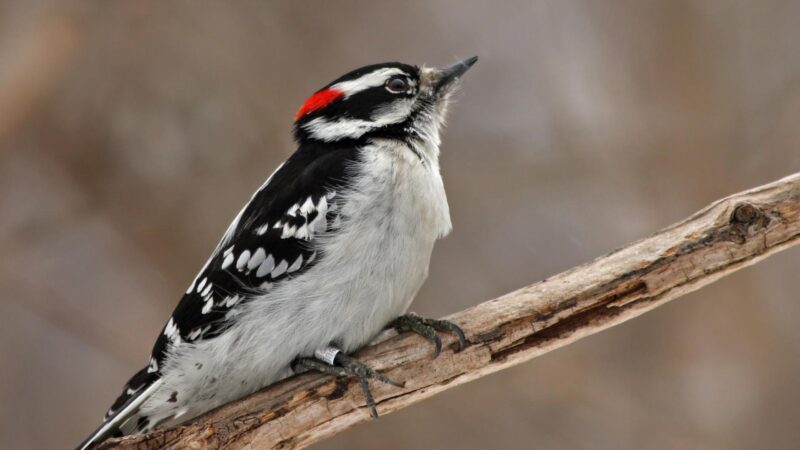
Woodpeckers are well-adapted to their tree-trekking lifestyles that are made possible by their stiff tail feathers, sharp-clawed toes, and robust neck muscles. They have stout but sharp, usually chisel-shaped beaks and long tongues that are capable of loosening tree bark and dislodging insects even from deep wood cavities. Aside from this, their distinctive hammering is also used to find potential mates, excavate holes for nesting or roosting, or establish their territories.
- Scientific Name: Picidae
- Appearance: All woodpeckers have zygodactyl feet and are characterized by their strong and sharp bills. They vary in body description and overall size. Some species, like the Great slaty woodpecker, have an elongated neck and long tail, while the Bar-breasted piculet has a short neck and short tail.
- Color: Color ranges from cream, white, red, black, and yellow. They can have spotted, mottled, or barred patterns on their bodies.
- Lifespan: 4 to 7 years (wild), up to 15 years (captivity)
- Habitat: Agricultural lands, woodlands, parks, orchards, suburban communities, and other areas that are well-forested
- Height: 7.5 to 55 centimeters (body length)
- Weight: 8.9 to 563 grams
- Diet: Primarily insect larvae, ants, wood-boring insects, and beetles, but they also feed on fruit, nuts, berries, and seeds. Yellow-bellied sapsuckers eat tree sap.
- Place Of Origin: Eurasia
- Characteristics: Territorial, migratory, solitary or traveling in pairs, and diurnal
Leopard Geckos

Their usually yellow and spotted skin pattern helps leopard geckos camouflage against both potential prey and predator in the wild. They have regenerative tails that they simply drop when they feel threatened by the presence of predators. They’re also agile creatures due to their short legs and added traction from their claws.
- Scientific Name: Eublepharis macularius
- Appearance: Fairly large lizards that have long bodies with triangular-shaped heads, thick and segmented tails, and clawed toes with no toe pads.
- Color: Usually yellow but varies depending on the species. They generally have black spots that are placed irregularly across their bodies and a white-colored ventrum.
- Lifespan: Up to 15 years (wild), up to 20 years (captivity)
- Habitat: Arid grasslands, dry and semi-dry deserts, areas with little vegetation, and rocky areas.
- Height: 18 to 28 centimeters (body length)
- Weight: 50 to 80 grams
- Diet: They feed on spiders, scorpions, centipedes, and beetles in the wild and waxworms, nestling mice, grasshoppers, crickets, springtails, and locusts in captivity.
- Place Of Origin: Iran, Pakistan, Iraq, Southeastern Afghanistan, and Western India
- Characteristics: Nocturnal, solitary, non-migratory but may hibernate during winters or travel further into the soil to avoid cold temperatures, and highly territorial.
Eagles
An eagle’s adaptations are geared towards catching prey: excellent eyesight that is 4 times stronger than the average human’s and has a wide perception of 270 degrees, razor-sharp talons that are used to capture, grip, and kill prey, and the ability to fly as high as 10,000 feet in altitude and at 100 miles per hour of speed.
- Scientific Name: Circaetinae, Harpiinae (except the genus Macheiramphus), Aquilinae, Buteoninae (only three known eagle species)
- Appearance: Large birds with strong, usually broad body builds, heavy and usually fully-feathered heads, strong feet, sharp and curved talons, broad and rounded wings, and large, broad beaks.
- Color: Usually have paler heads in comparison to their body plumage which varies in color from brown, gray, and black.
- Lifespan: Up to 30 years (wild), up to 50 years (captivity)
- Habitat: Usually forested areas or high cliffs near bodies of water (lakes, rivers, streams, reservoirs)
- Height: 40 centimeters to 1 meter
- Weight: 450 grams to 8.2 kilograms
- Diet: Mainly medium-sized birds and mammals such as hares, rabbits, ptarmigans, and grouses, but they also feed on carrion. Sea eagles feed on turtles, fish, and sea snakes.
- Place Of Origin: Eurasia and Africa
- Characteristics: Diurnal, highly territorial, solitary but can be seen traveling in pairs or becoming gregarious during the breeding season, and partially migratory.
Adaptations are a natural process that can be developments or changes in physical or behavioral traits and are important in the survival of many living organisms. They can be observable in animals, such as body coverings and modified or specialized body parts, as well as those unseen adaptations such as defense mechanisms and migrations.
List of Sources
Case, R. J. (1999). Octopus vulgaris. Animal Diversity Web.
Gunderson, A. (2009). Ursus maritimus. Animal Diversity Web.
Dacres, K. (2007). Panthera tigris. Animal Diversity Web.
Karkala, N. (2016). Elephas maximus. Animal Diversity Web.
Heying, H. (2003). Chamaeleonidae. Animal Diversity Web.
